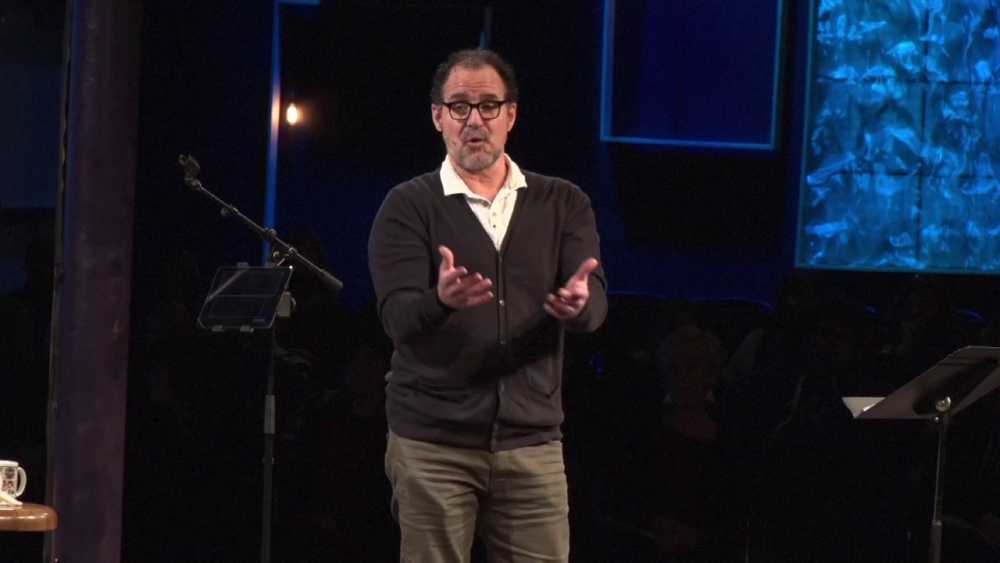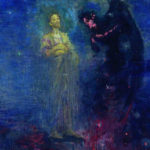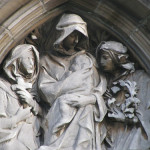We run our website the way we wished the whole internet worked: we provide high quality original content with no ads. We are funded solely by your direct support. Please consider supporting this project.

Myth Become History
The Gospel of John tells of the coming of Jesus in an unusual way. John writes:
In the beginning the Word already existed. The Word was with God, and the Word was God. Everything came into existence through him. Not one thing that exists was made without him. He was the source of life, and that life was the light for humanity. The real light, which shines on everyone, was coming into the world… The Word became human and lived among us. We saw his glory. It was the glory that the Father shares with his only Son, a glory full of kindness and truth. —John 1:1-5; 9
Jesus is the eternal one who has been with the Father since the beginning. He is not merely a human who was born into history; he is actually the “source of life” and the glory of God. In this sermon clip, Greg connects the story of Jesus’ birth with the deep longings, the inner yearnings of our heart, for something that is greater than this world. He illustrates this by demonstrating that the great legends and myths from a variety of cultures point to Jesus. While today we often equate myths with something that is not true, in fact they often tap into very deep realities. J.R.R. Tolkien and C.S. Lewis, two experts on mythology and on Christianity, spoke of the coming of Christ as the myth that became history. Christ became the very thing the greatest mythological stories have pointed to.
If you are interested in the entire sermon, it can be viewed here.
Category: Sermons and Video Clips
Tags: Christmas, Jesus, Myth
Related Reading

Rethinking the Resurrection
As much as every other aspect of Jesus life and ministry, I submit that the resurrection must be understood in light of the cross. This event was not anything like the resuscitation of a random corpse. It was the resurrection of the Incarnate Son of God who had fulfilled the human side of the God-human…

What Kind of God Did Jesus Reveal?
The ReKnew Manifesto exists to encourage believers and skeptics alike to re-think things they thought they already knew – hence our name, Re-Knew. I am currently working through the theology of the Manifesto in a series of posts that began a couple of months ago. Over the last few posts, we have been looking at the…

Atonement: What is the Christus Victor View?
Most western Christians today understand the atonement as a sort of legal-transaction that took place between the Father and the Son that got humanity “off the hook.” The legal-transaction scenario goes something like this: God’s holiness demands that all sin be punished, which in turn requires that sinners go to eternal hell. The trouble is,…

The Only Starting Point
Sree V. Remella via Compfight Our friend Roger Olson wrote a great article on placing Jesus first when constructing a statement of faith. It might seem like a small thing, but it deeply matters what we place as primary in matters of faith. Let’s always begin with Jesus. From Roger’s blog post: What are we…

The Cross in the Manger, Part 2
While some shepherds were tending their flock, an angel appeared to them announcing “good news that will cause great joy for all the people,” for it news about “a Savior…the Messiah, the Lord” (Lk 2:10-11). Most Jews of this time expected a Messiah who would save them by vanquishing their Roman oppressors and liberating Israel…

Naturalism and the Historical Jesus
The quest for a “merely human” Jesus The various radical views of Jesus now being advocated by certain scholars and propagated through the press are buttressed by a number of different historical arguments. Some argue, for example, that the evidence from the first century suggests that Jesus was not unique in his healing ministry. Or,…
